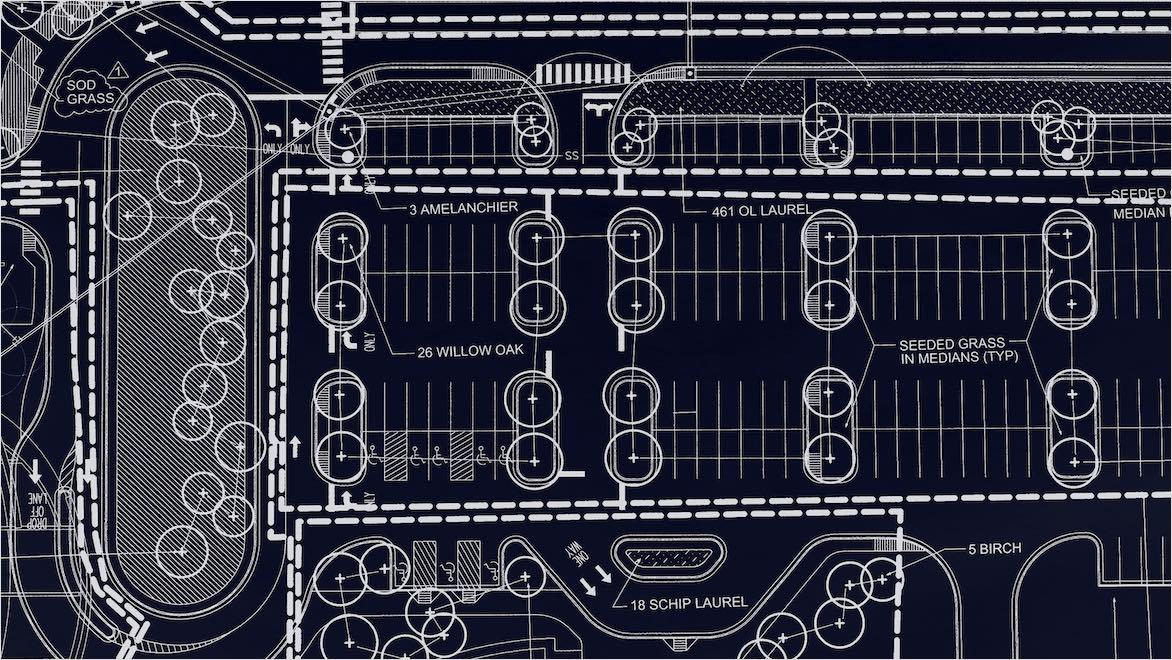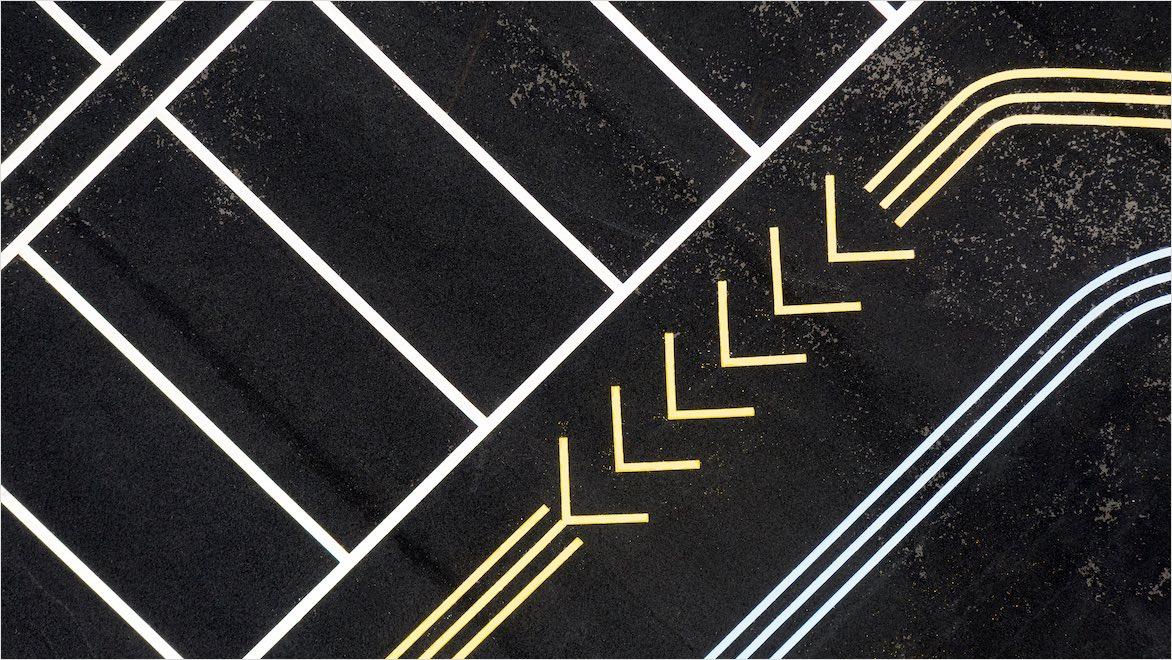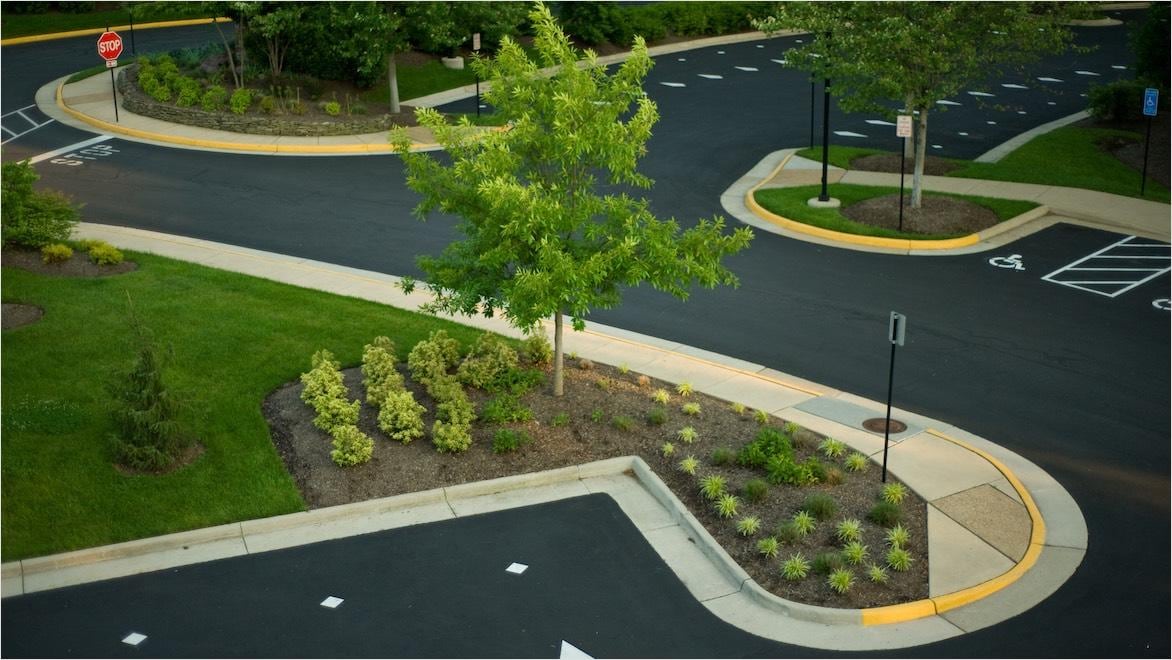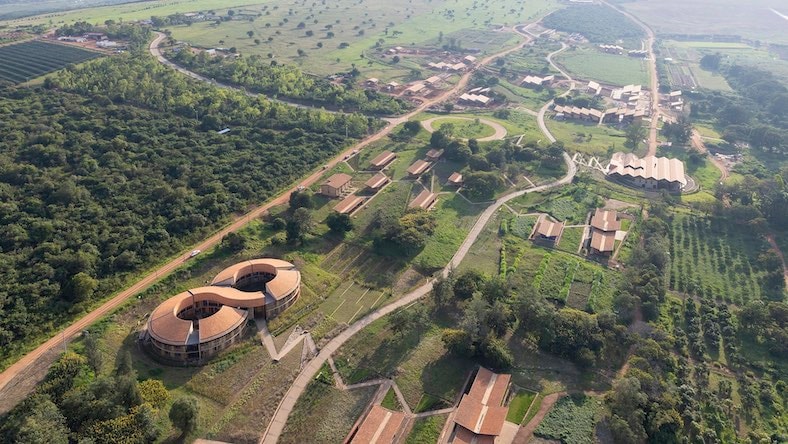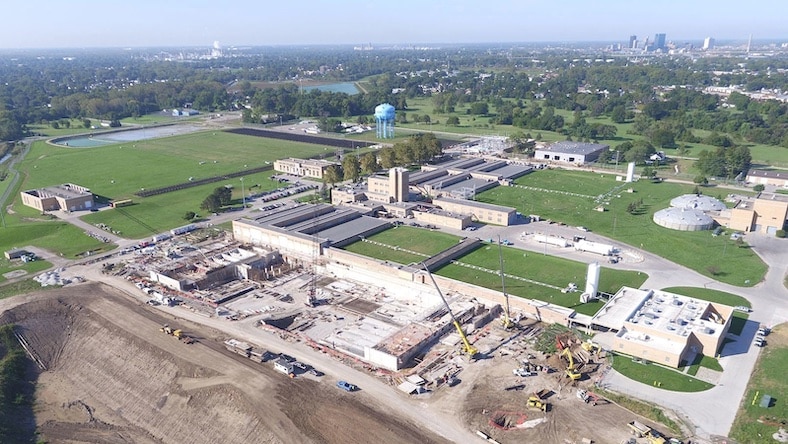& Construction

Integrated BIM tools, including Revit, AutoCAD, and Civil 3D
& Manufacturing

Professional CAD/CAM tools built on Inventor and AutoCAD
Parking lot design is the practice of using geometry to calculate the maximum financial return in a finite parking area while including the features that make it safe, convenient, and affordable for users and neighbors.
The most important thing to consider when designing a parking lot is what it will be used for—a lot for a large corporate office park will have very different characteristics and needs than one in a suburban strip mall, for instance.
The purpose will guide, and to some extent dictate, how to balance considerations of efficient use, traffic flow, safety, and aesthetics that match its immediate environment. Parking dimensions and accessibility needs will depend on the common user profile and will inform what many consider the Holy Grail of parking lot layout: efficient flow.
Designers must meet building and regulatory codes at multiple levels of government, as well as follow engineering and physical standards.
Generative design partners a designer or architect with machine learning technology to arrive at the best design for a project. Performance objectives are established and programmed, and the software can produce as many design iterations that meet them as needed. Manipulating inputs or variables in one area can then affect and improve the project’s methods, materials, or dimensions.
In parking lot design, those objectives and parameters might include the total land area, the number of parking levels, whether parking spaces are perpendicular or angled, or how much of the area must be dedicated to landscaping or access for handicapped drivers, emergency vehicles, or electric vehicle charging ports.
Testing the design in software can simulate usage patterns to refine designs and, for client presentations, can include regulatory approvals and other steps.
Parking lot layout software creates a 3D digital model of a parking lot drawing that stakeholders can look at from any angle. This model can be used to make changes and add elements, arriving at the best possible design to maximize the space. Benefits include:
Paper design workflows are manual and siloed, and their static nature can increase costs if different teams need to access or alter the latest design iterations. Plans can get lost and outdated. Parking lot design software enables access to multiple stakeholders at one time, reducing errors and rework.
Good parking lot layout software is easy to use. After establishing the available surface area, designating parking rows is as easy as dragging a line with a mouse or marking two endpoints. Standard space sizes are pre-set, so the number of spaces that fit an area updates automatically as changes are made.
Situated in a schematic of the surrounding cityscape, a 3D design in a software environment lets parking lot designers simulate vehicle patterns, revealing bottlenecks and opportunities for better layouts.
Good software includes libraries of markings and signage, such as guide arrows and warning symbols that have already been designed to meet standards of traffic laws and road usage. They can also contain parameter metadata describing accepted use, so dragging and dropping them into your model can update design performance.
Landscaping, wiring, lighting design, and more can be incorporated into the digital representation of a project and can be simulated for a variety of conditions. While a paper plan might not illustrate how lighting affects the immediate environment, for example, a 3D design model can reveal how landscaping can block ambient light, preventing keeping residential neighbors up at night.
Powerful BIM and CAD tools for designers, engineers, and contractors, including Revit, AutoCAD, Civil 3D, Autodesk Forma, and more
MASS Design Group
The Rwanda Institute for Conservation Agriculture (RICA) teaches local farmers how to embrace sustainability for better future yields. The campus, designed by MASS Design Group, will be completely climate positive. Sustainable projects like RICA are proofs of concept for novel ideas—even in parking lot design.
Image courtesy of Iwan Baan
Arcadis
Many old parking lots can be revamped to increase revenue, environmental responsibility, and efficiency—the first step is a 3D model to test new ideas. When a water treatment plant in Ohio needed urgent retrofits, a consultancy firm scanned the facility and built a 3D model.
Image courtesy of Arcadis
Designing your parking lot digitally using industry-standard tools means stakeholders can input their own metrics to complete the picture, sharing the updated design at every stage with relevant teams.
Autodesk’s Architecture, Engineering & Construction Collection includes swept path analysis for vehicle tracking, which can help find the most efficient layout for parking rows and bays in a surface area based on geometric rules.
Cut and fill costs can make or break a project, but for safety’s sake, projects cannot cut corners. Autodesk Civil 3D helps find the optimum grading metrics for a parking lot design so designers can minimize costs while assuring clients and users of robust construction.
Who said parking lots had to be plain concrete boxes? Generative design makes it possible to create eye-catching and outlandish shapes that perform just as well as historical designs.
This page on the Autodesk Forums website features a lively and informative discussion on the best way to design a parking lot in Autodesk Civil 3D.
First, ascertain accurate measurements of the total available area. Next, use an industry-standard software tool that deploys the elements your parking lot might need, including pre-programmed regulatory and environmental requirements. Once the design exists in a digital environment, it’s easy and inexpensive to make changes to create a design that will provide the highest ROI.
Designing your parking lot with specialized software gives project owners the opportunity to test how it will be used. A 3D model can simulate encroachments on local traffic, whether the number of entry and exit points needs to be increased or combined, and how easily typical parking lot users will navigate the space, revealing any potential problems before resources are committed.
Like any other construction project, parking lots need to adhere to the visual rules in local building codes. In an era when a proportion of green spaces is often mandated in new projects, landscaping might be a necessity rather than a choice.
A responsive 3D digital model of a design can automatically update any elements to be included as changes are made. The software is pre-programmed with relevant guidelines or traffic laws, so designers can be assured the design can blend with or add to the aesthetics of the environment and also remain well within legal or construction code limits.
